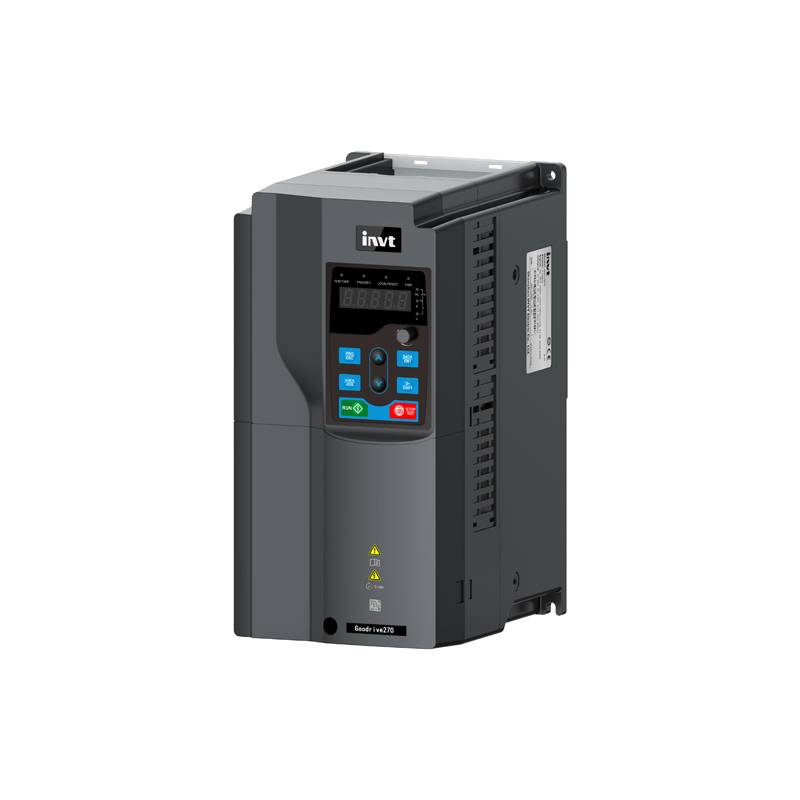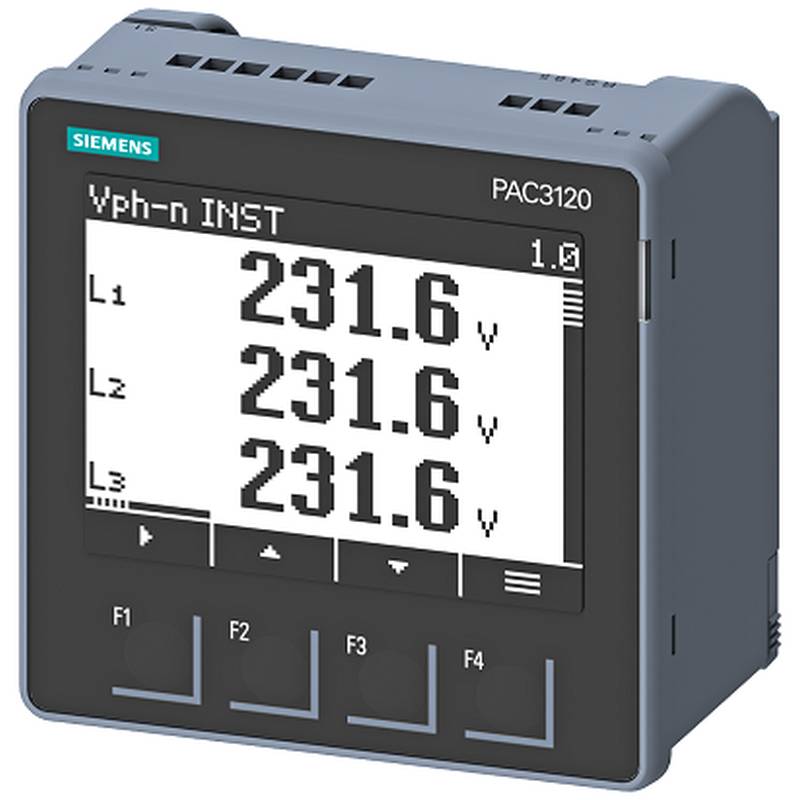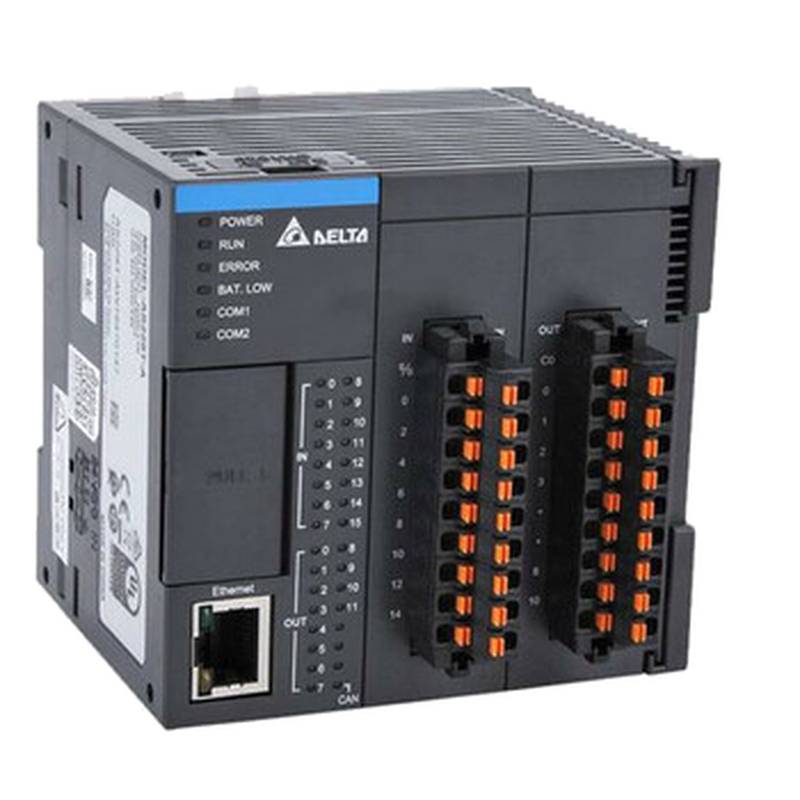
The INVT GD270-045-4 is a specialized variable frequency drive (VFD) engineered for energy-saving pump and fan applications. This inverter stands out with its high efficiency, precise control, and robust design, making it an ideal solution for optimizing fluid and air handling systems across various industrial sectors. Its core advantages lie in significant power savings, extended equipment lifespan, and enhanced operational stability. Key technical parameters include a power rating of 45 kW, an input voltage range typically accommodating 3-phase 380V-440V, and an output frequency range of 0-400 Hz, with an emphasis on low-harmonic distortion and advanced motor control algorithms.
Product Specifications
| Feature | Specification |
| :------------------ | :----------------------------------------------- |
| Model | GD270-045-4 |
| Rated Power | 45 kW (60 HP) |
| Input Voltage | 3-Phase, 380V-440V AC |
| Output Voltage | 3-Phase, 380V-440V AC |
| Output Frequency | 0-400 Hz |
| Control Method | Sensorless Vector Control, V/f Control |
| Protection Rating | IP20 |
| Mounting | Wall/Cabinet Mount |
| Dimensions (H x W x D) | Varies by enclosure, consult datasheet |
| Operating Temp. | -10°C to +40°C (derating may apply above +40°C) |
Core Features & Market Positioning
The INVT GD270-045-4 positions itself as a premium, energy-efficient VFD for demanding pump and fan duties. Its advanced sensorless vector control algorithm provides excellent torque response and precise speed regulation, even under fluctuating load conditions, which is critical for maintaining optimal process parameters in HVAC, water supply, and industrial ventilation systems. This technology minimizes energy consumption by matching motor speed precisely to system demand, often achieving energy savings of 30-60% compared to fixed-speed operation. The inverter's design emphasizes reliability with comprehensive protection features, including overcurrent, overvoltage, undervoltage, and thermal protection, ensuring longevity and reducing maintenance overhead. Furthermore, its compact footprint and robust construction facilitate integration into diverse industrial environments, reinforcing its value proposition as a cost-effective and high-performance solution.
Key Application Scenarios
This specialized inverter finds extensive application in sectors requiring efficient management of fluid and air flow. In municipal water supply and wastewater treatment plants, the GD270-045-4 optimizes pump operation to maintain constant pressure and flow rates while minimizing energy usage. For building HVAC systems, it ensures precise control of air handling units and circulation pumps, leading to enhanced comfort and significant reductions in electricity bills. Industrial applications include ventilation systems in mines and tunnels, process cooling pumps in manufacturing facilities, and irrigation systems in agriculture, where consistent and efficient operation is paramount. The inverter's ability to handle variable torque loads inherent in fan and pump applications makes it particularly well-suited for these scenarios.
Practical System Integration Guidance
Integrating the INVT GD270-045-4 into existing systems is straightforward, designed for minimal commissioning time. For wiring, ensure adherence to local electrical codes, connecting the incoming power supply to the L1, L2, L3 terminals and the motor to the T1, T2, T3 output terminals. Grounding is essential for safety and proper operation. Programming typically involves setting motor parameters such as rated voltage, frequency, current, and speed, which are crucial for the sensorless vector control to perform optimally. Basic parameter setup for common pump and fan applications can be achieved by following the guided start-up wizard available in the drive's menu. Advanced configuration may involve setting acceleration/deceleration times, torque boost, and analog input scaling for external speed references, which can be accessed via the keypad or optional communication modules.
Operation and Risk Mitigation
Safe operation of the INVT GD270-045-4 relies on proper installation, parameter configuration, and adherence to operating guidelines. Before powering up, verify all connections are secure and that the motor and load are correctly matched to the drive's capacity. During operation, monitor the drive's status screen for any warning or fault codes. Common troubleshooting involves checking for overload conditions (fault code E.OC), insufficient voltage (fault code E.UV), or overheating (fault code E.OH). Resetting the drive after a fault is typically done via the keypad or a digital input, but the underlying cause must be identified and rectified before restarting. Regular maintenance, such as cleaning air vents and ensuring adequate ventilation around the drive, helps prevent thermal issues and ensures continuous, reliable performance.
Scalability & Long-Term Value
The INVT GD270-045-4 offers substantial long-term value through its robust design and integration capabilities. Its compatibility with a wide range of industrial automation platforms via optional communication cards (e.g., Modbus, Profibus) allows seamless integration into supervisory control and data acquisition (SCADA) systems and building management systems (BMS). This facilitates remote monitoring, control, and data logging, crucial for IIoT initiatives and predictive maintenance strategies. The drive's firmware can often be updated, providing access to new features and performance enhancements over time, thereby extending its useful life and protecting the initial investment. Its energy-saving performance directly translates into reduced operational costs, offering a compelling return on investment, especially in applications with continuous running times.
Frequently Asked Questions
What are the primary benefits of using the INVT GD270-045-4 for my pump system?
This VFD significantly cuts energy consumption by precisely matching motor speed to water demand, reducing operational costs. It also extends pump lifespan by minimizing mechanical stress through soft starts and stops.
The drive offers enhanced system control, ensuring stable pressure and flow rates, which improves process efficiency and reliability. Its advanced protection features safeguard the pump and motor from electrical faults.
Using this specialized inverter leads to lower maintenance requirements due to reduced wear and tear on motor components and associated mechanical parts. It also contributes to a quieter operating environment.
How do I connect the INVT GD270-045-4 to my existing motor and control circuit?
Connect your 3-phase motor to the output terminals (T1, T2, T3) and the main power supply to the input terminals (L1, L2, L3). Ensure proper grounding for safety and signal integrity.
For control signals, use the designated digital and analog input terminals for functions like start/stop commands, speed reference, and external fault signals. Refer to the manual for specific terminal assignments.
Always follow local electrical codes and safety precautions during wiring. Verify all connections are secure and insulated before applying power to prevent short circuits or damage.
What are the most common fault codes for the GD270-045-4 and how can I resolve them?
Fault E.OC typically indicates overcurrent, often due to motor overload or rapid acceleration. Reduce the load or acceleration time.
Fault E.UV signifies undervoltage, which can happen if the input power supply is unstable. Check power source stability and wiring.
Fault E.OH suggests overheating, usually caused by insufficient cooling or high ambient temperature. Ensure proper ventilation and check cooling fan operation.
Can the INVT GD270-045-4 be used with single-phase motors or in single-phase applications?
The INVT GD270-045-4 is designed specifically for 3-phase motors and requires a 3-phase power supply for optimal operation. It cannot directly power a single-phase motor.
Attempting to run a single-phase motor on a 3-phase VFD can lead to motor damage and inconsistent performance due to the different winding configurations. Use a 3-phase motor for this inverter.
If your application strictly requires a single-phase motor, you would need to consider a VFD specifically designed for single-phase output or explore a phase converter if a 3-phase supply is unavailable.
What is the recommended way to set up parameters for fan control with this inverter?
Start by entering the motor nameplate data accurately into the drive's parameters for motor identification. This includes voltage, current, frequency, and RPM.
Configure the control mode to "Sensorless Vector Control" for optimal fan performance and energy efficiency. Adjust acceleration and deceleration times to prevent sudden changes in airflow.
Set the maximum output frequency and over-speed protection parameters according to your fan's specifications to ensure safe and efficient operation. Utilize the V/f curve for simpler fan applications if vector control is not critical.
What is the typical energy saving percentage achievable with the GD270-045-4 in pump applications?
Energy savings can range from 30% to 60%, depending on the application's load profile and how often the pump operates at reduced speeds. Lower speed operation drastically cuts power consumption.
By precisely matching pump speed to system demand, the drive avoids inefficient operation at full speed, which is often unnecessary. This precise control is the primary driver of energy savings.
Constant monitoring of energy usage before and after installation will provide specific savings data for your particular pump system and operating conditions.
How does the GD270-045-4 handle fluctuating load conditions in industrial ventilation?
The inverter utilizes sensorless vector control to maintain precise speed and torque even when the air volume demand changes unexpectedly. This ensures consistent airflow.
Its rapid response time allows it to adjust motor speed almost instantaneously to match the required ventilation rate, preventing system instability. This is crucial for processes sensitive to airflow variations.
The drive's automatic energy-saving function optimizes speed based on the actual load, ensuring maximum efficiency during periods of lower demand. This prevents over-ventilation and wasted energy.
What communication protocols are supported by the INVT GD270-045-4 for integration into SCADA systems?
The GD270-045-4 supports standard industrial communication protocols, often through optional communication expansion cards. Modbus RTU is commonly available.
Other protocols like Profibus DP, DeviceNet, or Ethernet/IP might be supported via specific add-on modules, allowing flexible integration into diverse automation networks. Check the product documentation for available options.
These communication capabilities enable remote monitoring of drive status, parameters, and fault diagnostics, as well as remote control of the VFD, facilitating centralized system management.
Is it necessary to install a line reactor or output filter with the GD270-045-4?
A line reactor is often recommended to limit input current distortion and protect the drive from voltage notching, especially on weak power supplies. It also suppresses harmonics.
An output filter, such as a dV/dt filter or sine wave filter, may be necessary if the motor cable is long or if the motor is sensitive to switching noise. This reduces motor insulation stress.
The necessity depends on the specific installation environment and motor characteristics. Consult the INVT documentation or a qualified engineer to determine the appropriate filtering requirements for your system.
What are the IP rating and environmental considerations for installing the GD270-045-4?
The GD270-045-4 typically has an IP20 rating, meaning it is protected against solid objects larger than 12.5mm but not against water ingress. It is suitable for clean, dry indoor environments.
Installation should be in a well-ventilated enclosure to prevent overheating, as operation generates heat. Avoid dusty, corrosive, or high-humidity locations unless appropriate protective measures are taken.
Ensure the ambient temperature stays within the specified operating range (-10°C to +40°C) to avoid derating or potential damage. If operating above 40°C, derating the drive's capacity is usually required.























